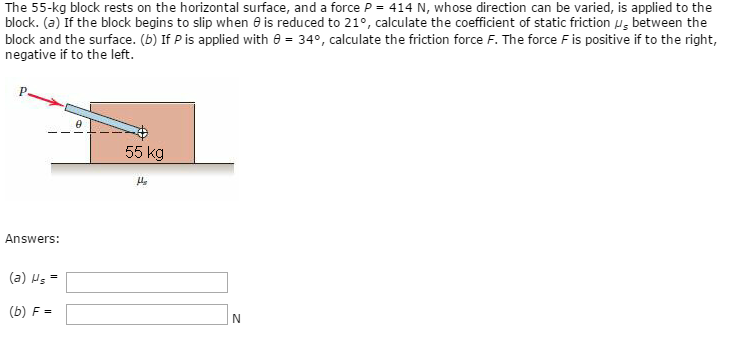The 55−kg block rests on the horizontal surface, and a force P = 414 N, whose direction can be varied, is applied to the block. (a) If the block begins to slip when θ is reduced to 21∘, calculate the coefficient of static friction μs between the block and the surface. (b) If P is applied with θ = 34∘, calculate the friction force F. The force F is positive if to the right, negative if to the left. Answers: (a) μs = (b) F = N
